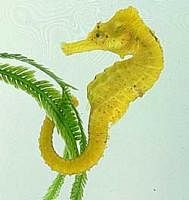

During a recent meeting of the Board chaired by Environment Minister Jairam Ramesh, the state government had sought permission for collecting about 1 kg of seahorses from its shore for conducting research. Seahorses are mainly used in traditional Chinese medicine. A sea horse normally weighs around 7 ounces to 1 pound.
However, the proposal was opposed tooth and nail by the members of the Board, particularly conservationists who felt that such move would open the door for mindless extraction of the species enlisted in Schedule –I of the Wildlife (Protection) Act, 1972.
"If we give permission for research then we should also be open to the idea that it could be meant for commercial purpose as well. Hence, we have nipped the proposal in the bud itself," board member and conservationist M K Ranjitsinh told reporters. He was of the opinion that commercial exploitation of such a rare and endangered species should not be allowed.
Already the water creature is being exploited in a large scale for a variety of reasons particularly to feed the traditional medicine market, particularly in China. In India, presently, its commercial exploitation is being carried out along the Tamil Nadu and Kerala coasts with government permission.
The seahorse is the only species in which the male bears the offspring. Due to the shape of its body, it is a poor swimmer that sticks to the shallow waters, using its tail to grab on to sea grass and corals found nearer the shore.
According to conservationists, these species get easily affected by loss of habitat, pollution or even slightest changes in their environment, making them the first indicators of the health of the near-shore marine habitat.